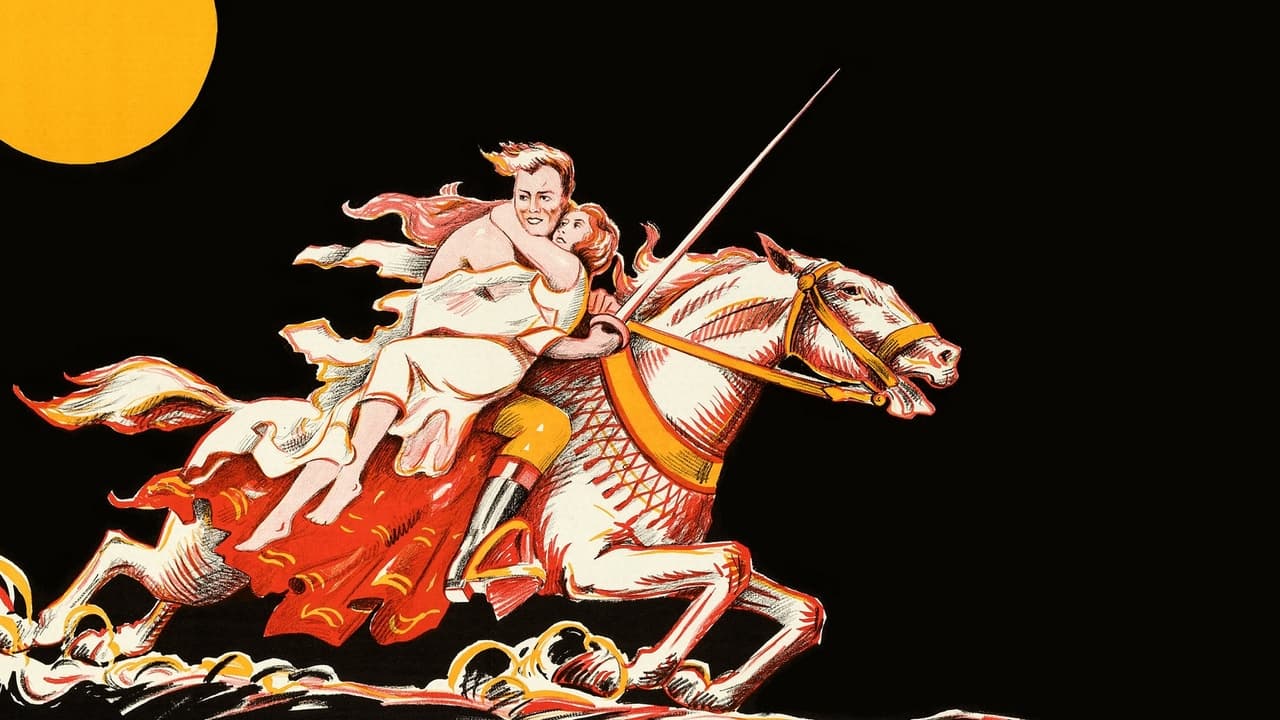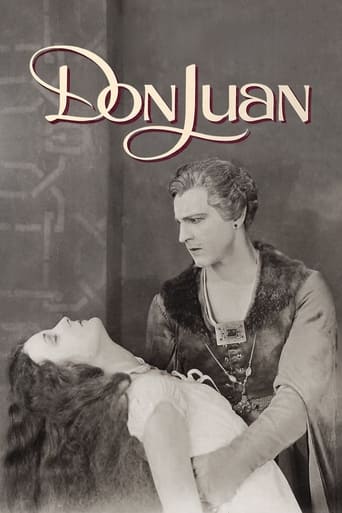

Lack of good storyline.
... View Moreeverything you have heard about this movie is true.
... View Morea film so unique, intoxicating and bizarre that it not only demands another viewing, but is also forgivable as a satirical comedy where the jokes eventually take the back seat.
... View MoreThrough painfully honest and emotional moments, the movie becomes irresistibly relatable
... View More. . . to understand how DON JUAN's escape from a Borgia dungeon could have happened. Since I lack such a diploma, I cannot fathom how this scene is any more plausible than that James Bond flick in which half of Venice collapses into the canals toward the end due to an elevator malfunction. I also noticed that the original print I just watched lacks many of the "synchronized sound effects" with which Warners Bros. sound technicians later enhanced select snippets of DON JUAN for their "25 Years of Sound" celebratory documentary shorts. Apparently, these studio flunkies were so lacking in imagination that they could not conceive of a later generation that would be able to compare the original DON JUAN studio release to their fraudulent "spiffed up" version. As Pope Alex wrote, "What a tangled web we weave when first we endeavor to deceive." Of the three characters actor John Barrymore tackles in DON JUAN, I like his brief cameo as a stand-in for Borgia Family torturer Neri the best. He is convincing then; less so as a lover, and still less as a duelist.
... View MoreThis is a good example of a silent adventure film with a talented star (John Barrymore) in a role to which he is perfectly suited. However, the primary reason it is remembered today is that this was the first feature film to use the Vitaphone system. In other words, it was the first film to have a synchronized sound track, even if all it did at the time was provide orchestral accompaniment and sound effects such as swords clashing. It's a shame that is what it is mainly remembered for, because the film is great entertainment. Barrymore not only entertains the audience with his athleticism, he gives great depth to the role of the wealthy cad who believes that woman gives man only three things - "life, disillusionment, and death" - until he meets a woman (Mary Astor) whose behavior challenges his lifelong beliefs.Another interesting thing about this film is that two of the female stars are playing roles that seem unusual for them if you are familiar with their later work. Mary Astor, at age 20, is playing an innocent in this film. The finely chiseled features she developed as she got a little older had her playing good but hardened women or femme fatales. Myrna Loy plays the sneaky aid to Lucrezia Borgia, where she is best known as playing the heroine in her talking picture roles once she got to MGM.The irony of this film is that by 1926 the camera work is able to help make the the sword fight and the horseback battle two very exciting sequences because the Vitaphone soundtrack was not tightly synchronized to the action on screen. Once the synchronized speech phase of sound on film began, such mobile action films as these would not be possible for awhile. Highly recommended, it's just too bad it is not available on DVD.
... View MoreTechnically speaking, this is a wonderful film. It was one of the first films with a synchronized score created to accompany it (on a separate disk) and the cinematography and sets were amazing for 1926. As a result, it's quite beautiful to watch. Unfortunately, when it comes to the script and acting, the film leaves a lot to be desired. While it is not true that all silents featured overacting, this one featured many awful performances by today's standards--with overly melodramatic scenes again and again. Subtle this film sure ain't! From a historical standpoint, the film is of dubious value. It's true that the Borgia family was indeed quite awful. The patriarch of the family, Pope Alexander VI, fathered several illegitimate children, gave his sons high positions in the Church and was quite the amoral schemer. However, while these "peccadilloes" are many and widely accepted as true as were the awful schemes of his son, Caesar, the real-life Lucretia may not have been the evil poisoning slut you saw in the film--this is open to much debate among historians. But I suppose that it does make for some entertaining moments--too bad Alexander VI never was seen in the film--he would have provided the film some much needed excitement.As for Don Juan, he was unfortunately a fictional character. Oddly, while this film is set in one of the Italian states in the late 15th century, the film THE ADVENTURES OF DON JUAN (with Errol Flynn) was set over a hundred years later! However, considering that Flynn and the star of this film, John Barrymore, were best friends, womanizers and serious alcoholics, it seems very fitting that both took on this same role.
... View MoreI enjoyed "Don Juan" as the first feature-length film with a soundtrack, but I just can't see how the sound could have been recorded simultaneously with the film. There's simply too many cuts, and the sound is too closely in sync, for it to be possible that the orchestra could play while filming was going on. It must have been dubbed afterwardand as a lover of early sound film I am wondering just how. Did they set up a projector at Carnegie Hall and record there? I know Warners had a studio in New Yorkwas it big enough for a complete orchestra? I also noticed that, while the synchronization was quite good, they couldn't pull off the sword fight. For the most part the fight shows the two men separately slashing away, and only a few scenes show the fight as it would usually be done, with both actors in frame. An enjoyable film, a tad longer than it needed to be, and the hisssssss of the soundtrack gets on one's nerves after a while.
... View More